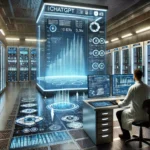Understanding Performance in the Workplace and Beyond
Imagine a stage where every action is scrutinized, every word weighed—this is the essence of performance. Whether it’s a play, concert, or even a job role, performance involves presenting something to an audience. But what exactly does this mean in different contexts?
The Workplace: A Performance Arena
In the workplace, job performance is like a script that needs to be memorized and delivered flawlessly. It’s not just about completing tasks; it’s about how you do them. Think of it as a play where every actor has their part to play.
Types of Performance in the Workplace
Job performance can be categorized into three main types: contextual, task, and citizenship performances. Contextual performance is like the setting of your play—how you fit into the company culture. Task performance is about executing tasks effectively, akin to delivering lines with perfect timing. Citizenship performance involves going above and beyond, much like an actor who improvises a scene to enhance the overall experience.
Performance Art: A Creative Canvas
Now imagine stepping off that stage into the world of performance art—where every moment is a creation in itself. Performance art emerged as a form of expression, often involving live events and audience interaction. It’s like painting with your body or using sound to convey emotions without words.
Key Figures in Performance Art
Artists such as Jackson Pollock, Willem de Kooning, John Cage, Allan Kaprow, Yoshihara Jiro, Kanayma Akira, Murakami Saburo, Kazuo Shiraga, Valie Export, Adrian Piper, and Carolee Schneemann have contributed significantly to this form of art. Their works often challenge societal norms and explore themes like gender and sexuality.
Impact on the Audience
Theatrical performances can be quite intense, with heart rates spiking due to anticipation, confrontation, and release. This is much like a roller coaster ride—exciting yet unpredictable. The spontaneity in performance art supports communication with the audience, making every moment count.
Improving Performance: A Scientific Approach
Now let’s turn our attention to how we can improve performance in both creative and professional settings. Research shows that active learning techniques can significantly boost student performance. In fact, studies have demonstrated that active learning increases performance in science, engineering, and mathematics by up to 20% (Freeman et al., 2014).
Training for Problem Solving
Problem-solving skills are crucial in any field. Training programs like those focused on self-regulation can help unemployed job seekers improve their performance state, much like an actor preparing for a role. These training sessions focus on developing mental states that enhance adaptability and reduce fear (Noordzu et al., 2013).
Conclusion: The Art of Performance
In essence, whether you’re performing in the spotlight or behind the scenes, the key to success lies in preparation, practice, and a willingness to embrace challenges. Just as an actor must understand their role deeply, so too must we understand our own performance requirements.

You want to know more about Performance?
This page is based on the article Performance published in Wikipedia (retrieved on February 24, 2025) and was automatically summarized using artificial intelligence.




